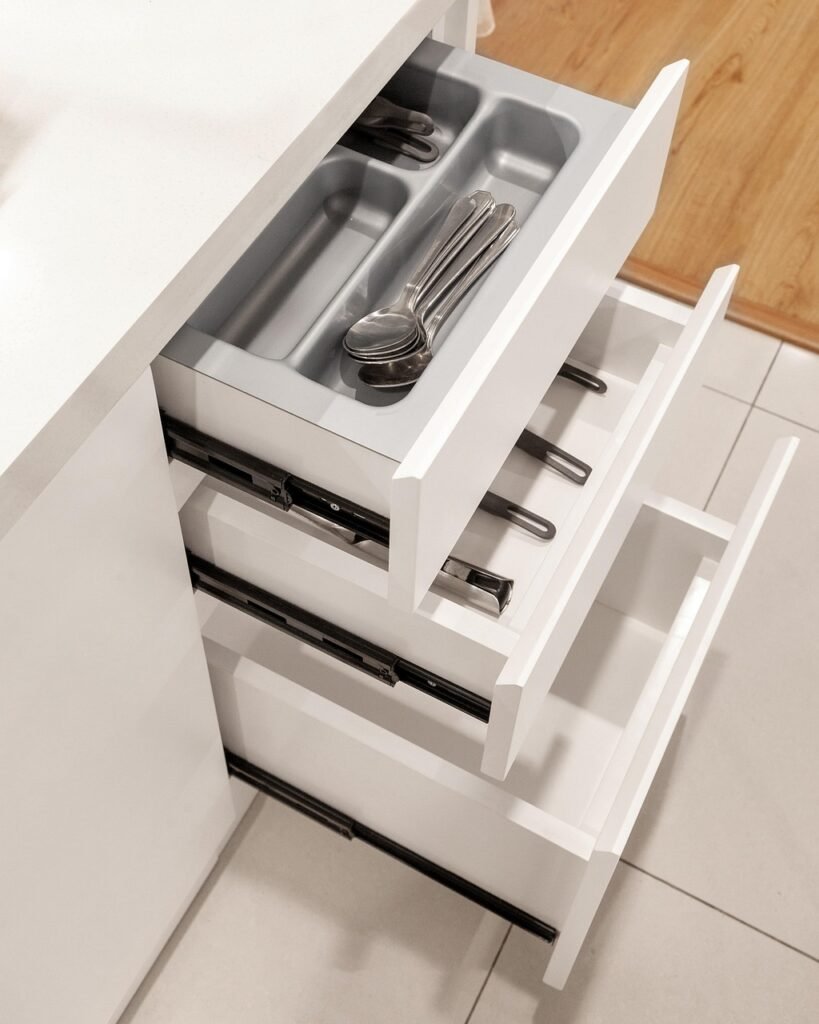file cabinet is a necessity for home or office, and people use it in many ways. Families can be used to store items, documents and other things, while offices are used to store important documents, information and contracts, which play a very important role in people’s lives and add color to life. But how much do you know about filing cabinet use? Here’s a look at some of the situations that file cabinets encounter in your life.
Table of Contents
ToggleFiling Cabinet Use-How do I remove file cabinet drawers
Remove file cabinet drawers with care to avoid damage or injury. First, make sure the cabinet is stable and placed on a flat surface. Check the drawers for locking devices – many cabinets have built-in locks or metal clasps near the slide. If it is locked, you need to use a key or manually release the door lock.
Then, empty the drawer to reduce the weight. Gently pull it outward until it is fully extended. Most drawers use slide rails; Check whether they are ball-bearing or frictional. For ball rails, place a small plastic clip or lever on the inside of the guide rail. Press or lift it to get out of the drawer. If the slide does not have a release mechanism, tilt the drawer up when pulled to get it off the track.

How to open a file cabinet without a key
Opening a locked filing cabinet without a key requires patience and caution to avoid damage. Check the default code if the lock is combined – common defaults like “000” or “123” may work. For locks with keys, check the cabinet for manual overload. Some models have a release lever hidden under the plastic cover of the handle; Gently pry it open with a flat-head screwdriver and enter the mechanism.
If there is no cover, use a lock pick tool, with a tension wrench and a paper clip. Insert the wrench into the keyhole, apply slight rotational pressure, then place the paper clip inside to align the pins. Alternatively, insert a thin butter knife or metal shim between the drawer and frame of the side cabinet and wiggle it to trigger the internal latch.
For stubborn locks, lubricate the keyhole with graphite spray for easy picking. If the cabinet uses a tubular lock, the hollow tip of a ballpoint pen that can be pressed firmly into the lock hole may cause the lock head to rotate. Avoid bending or locking the rail with excessive force. If the method fails, use a drill lock: Use a small drill bit (visible as a seam) on the shear line to disable the pin.

How to paint a metal filing cabinet
Replace the metal file cabinet and clean the surface with soapy water and a brush to remove dirt and grease. Rinse well and let dry. Sand the entire cabinet with medium sandpaper to create a rough texture and allow paint to adhere, focusing on rust or chipped areas. Wipe off the dust with a rag.
Use a brush, roller or spray to apply the anti-rust primer and cover evenly. Allow to dry as directed. Choose a high-quality enamel or acrylic paint with a metal design. Spray paint provides a smooth finish; Apply a thin layer to a well-ventilated area, and for the brush/roll method, work in thin layers and avoid streaks. Each coat dries completely before adding another.
Wait for the paint to dry and seal with a clear polyurethane top coat. For drawers, remove them first and paint them separately to ensure full access. Sanding and painting Wear gloves, a mask and safety goggles. Avoid moisture and prevent bubbles or uneven drying. First test the paint in a small area to confirm the color and finish. Save the rest of the paint for repainting. Maintaining preparation and patience ensures professional, lasting results.

Conclusion
Lubricate the rails regularly, check the lock status, and repair corroded or loose parts in time. Keep spare paint and replacement parts after refurbishment to facilitate later maintenance. Always put safety first when operating, avoid violent disassembly or the use of corrosive cleaning agents. If in doubt about the procedure, refer to the product manual or consult a professional to ensure that the function and beauty of the file cabinet are maintained for a long time.







